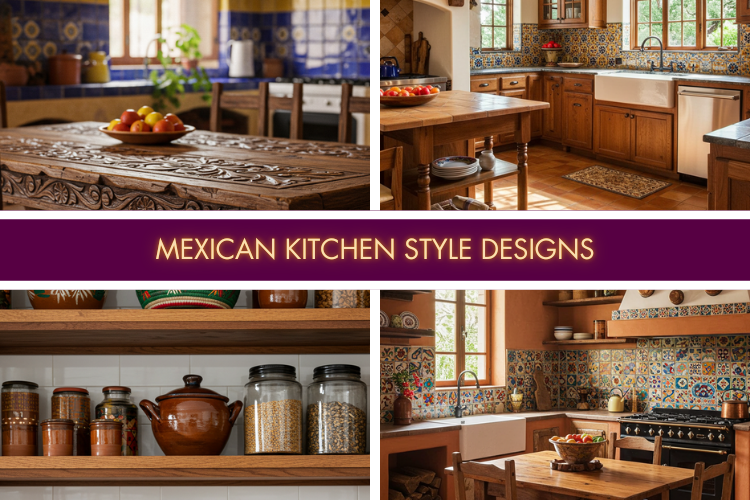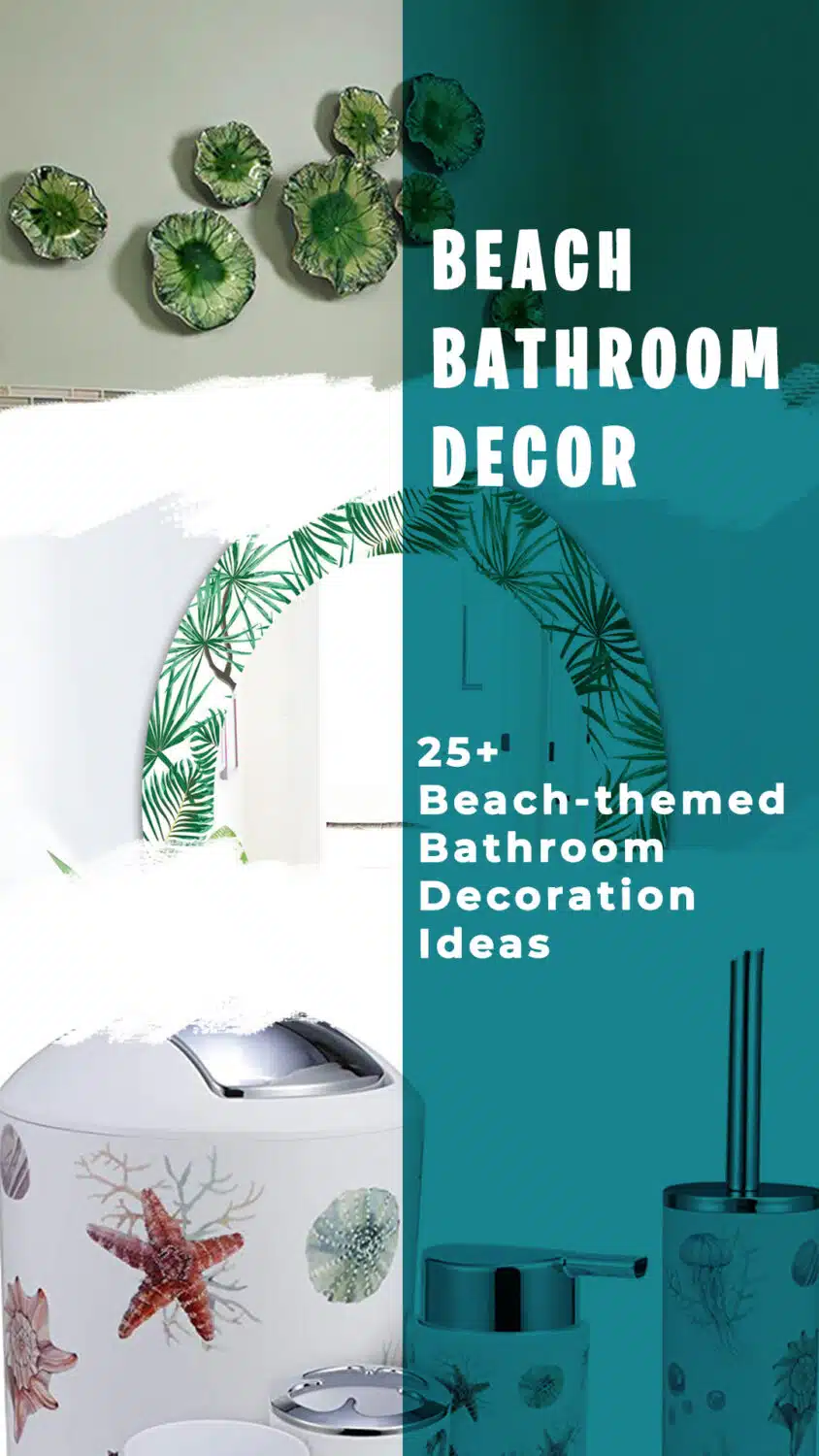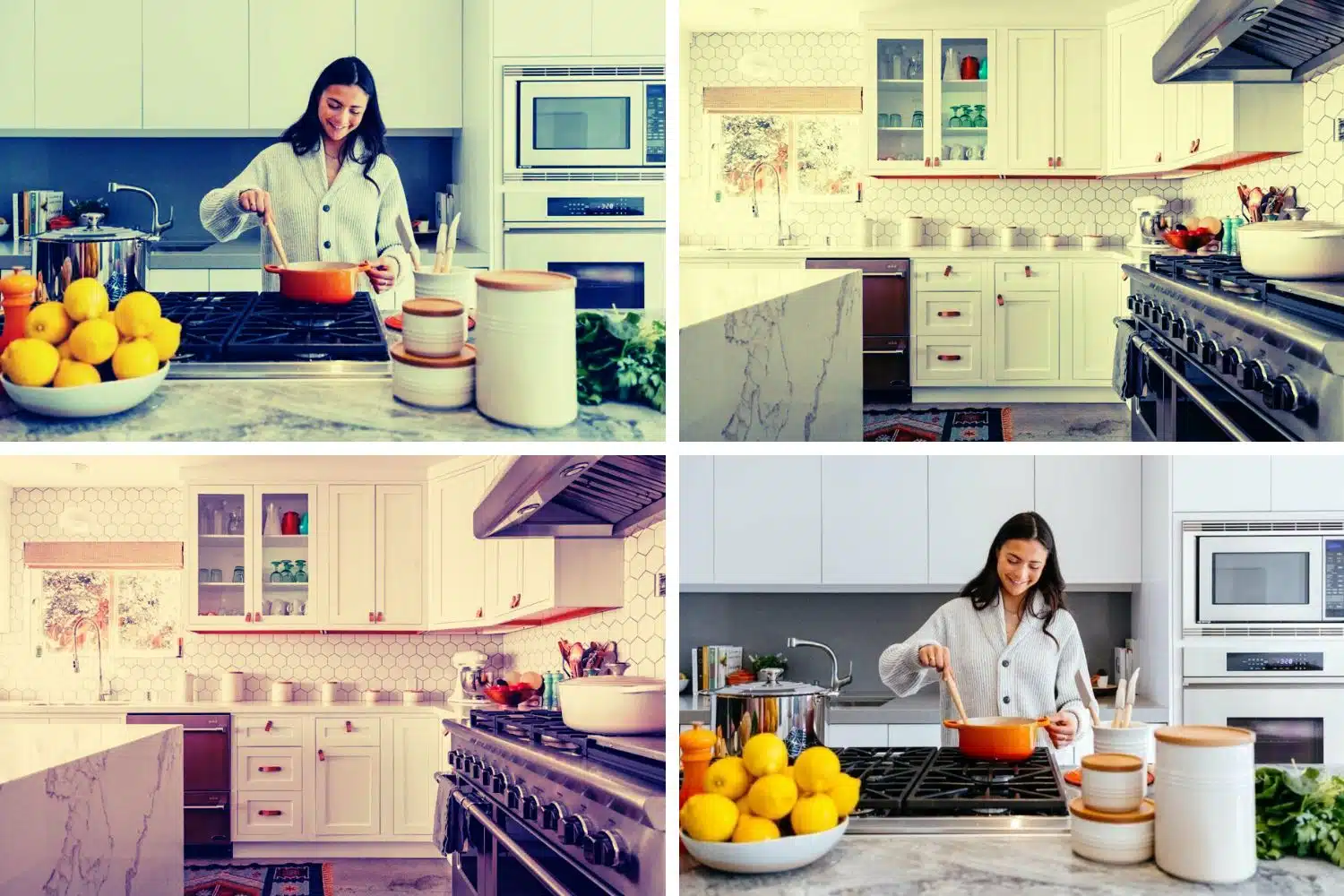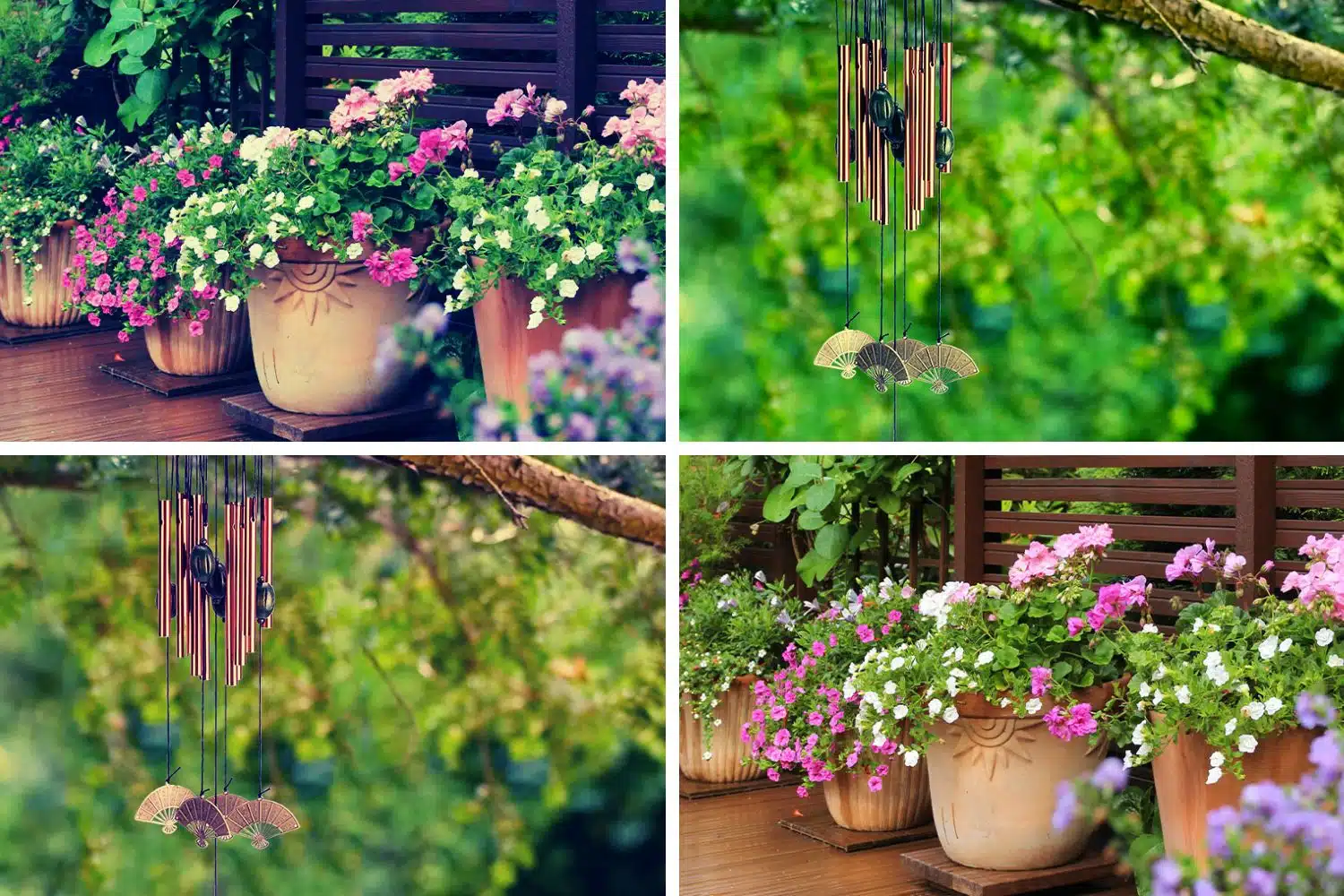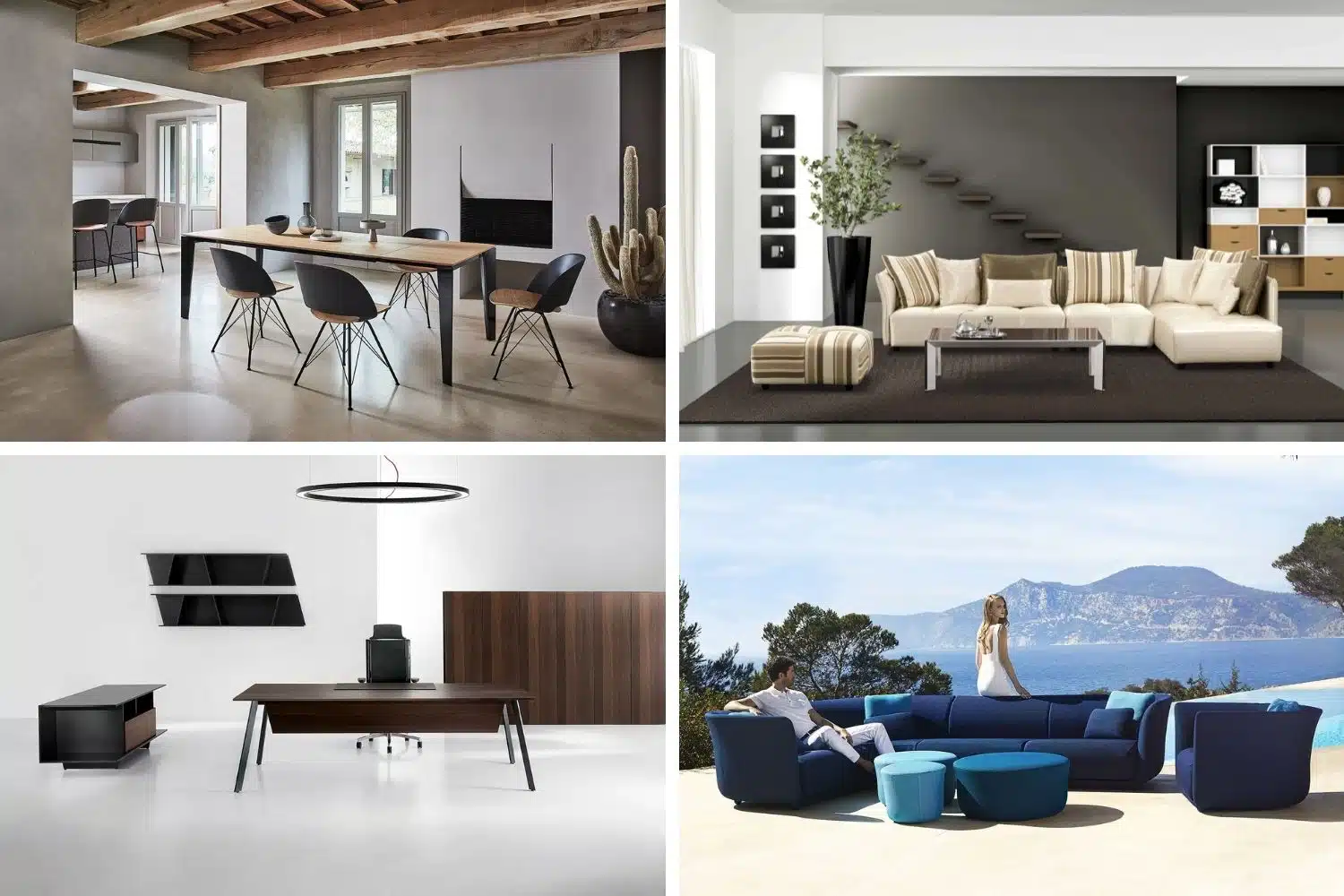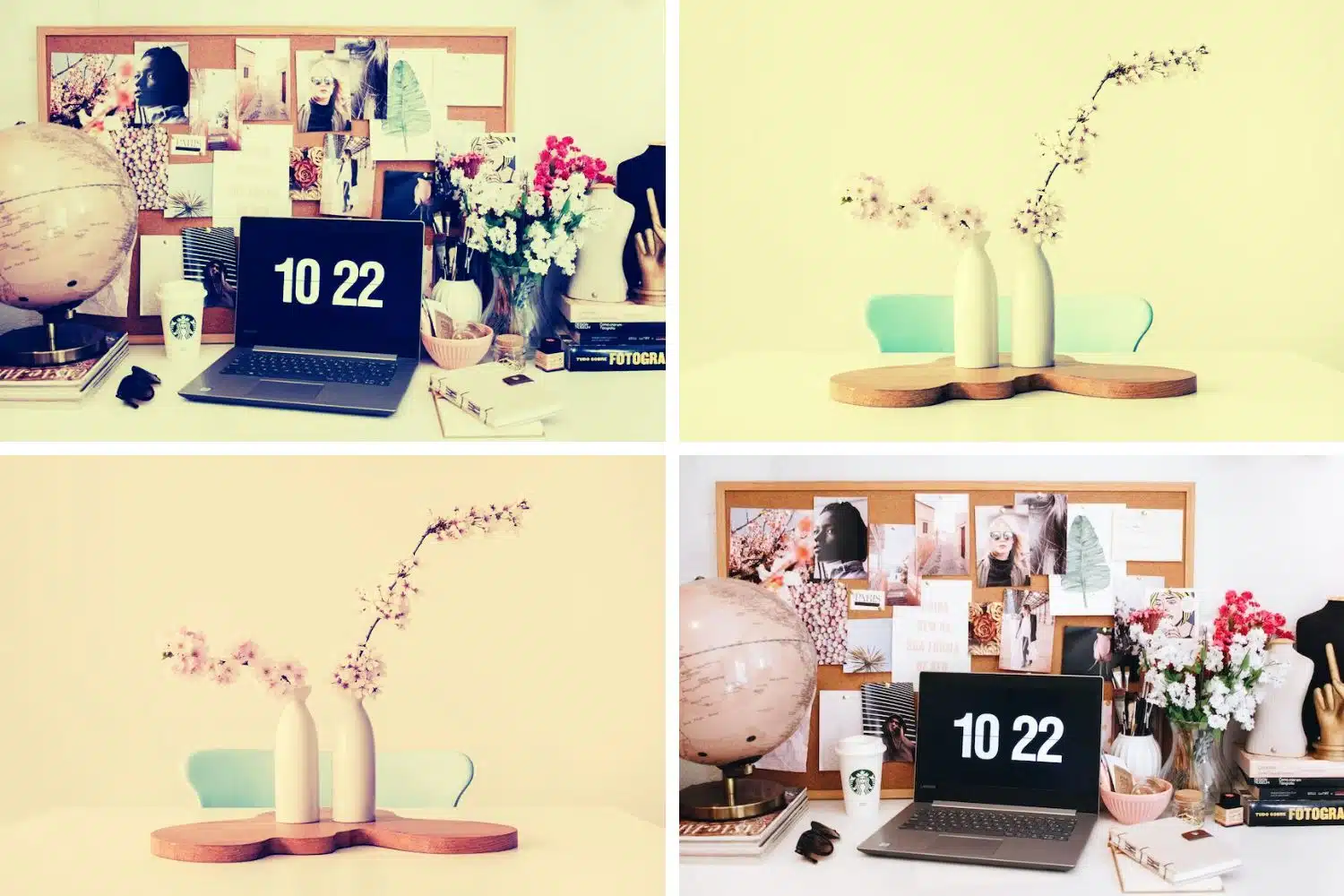The authentic Mexican kitchen style is defined by vibrant colors, bold textures, and artisanal craftsmanship. With its rich cultural heritage, Mexican design wonderfully blends rustic charm with modern functionality, creating spaces that are not just for cooking, but are lively gathering spots for family and friends.
In fact, these kitchens are truly the heart of the home. In this article, we’ll delve into 20 stunning designs and ideas that showcase the captivating essence of a Hacienda style kitchen. Whether you’re renovating or just daydreaming, these enchanting designs will inspire you to embrace color, pattern, and tradition in your Mexican kitchen decor. Ultimately, from hand-painted tiles to artisan crafts, prepare to fall in love with the beauty and warmth of this incredible style!
What Defines a Mexican Kitchen?
More than just a room for preparing meals, the kitchen in Mexico is a place of family, celebration, and tradition. Understanding this is key to capturing the authentic feel of the Mexican kitchen style. It’s a space that prioritizes warmth, hospitality, and a deep connection to natural, handcrafted materials. The design often tells a story, showcasing generations of craftsmanship and a love for bold, expressive decor. Consequently, every element, from the flooring to the ceiling, is an opportunity to add personality and create an inviting atmosphere.
1. Hand-Painted Talavera Tiles: The Soul of Mexican Kitchen Decor
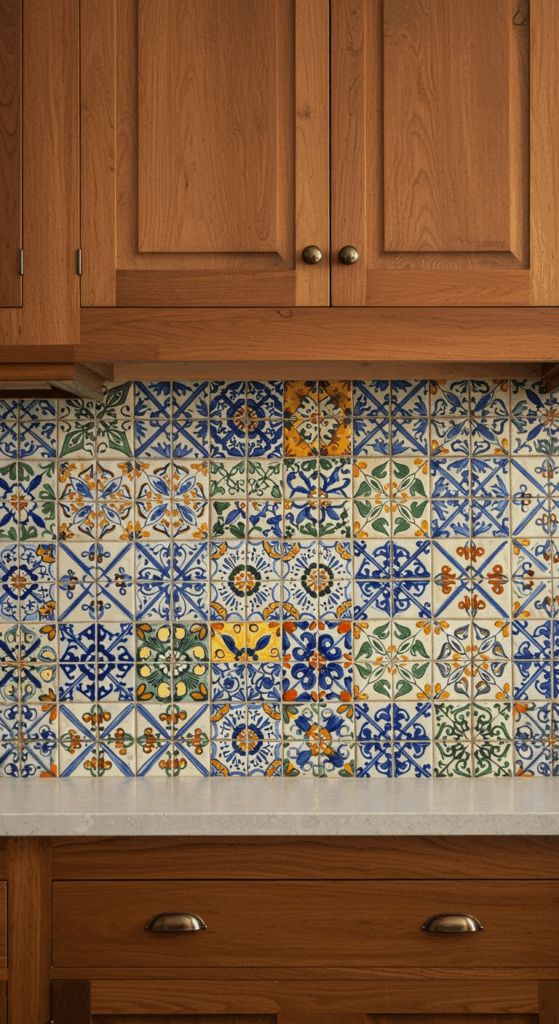
Talavera tiles are the signature element of a Talavera tile kitchen. They infuse the space with vibrant color, intricate patterns, and a deep sense of cultural heritage. They serve as a powerful visual anchor and instantly communicate the essence of the Mexican kitchen style, acting as a stunning focal point.
A Mexican kitchen backsplash is the most common application, but don’t be afraid to think bigger. For instance, you could tile the front of a kitchen island or create a feature wall. To begin, you can purchase a set of authentic hand-painted Talavera tiles, which come with plenty of options. For installation, you’ll need reliable materials like tile adhesive for installation and high-quality grout for tile installation to ensure a durable, professional finish.
For a more modern Mexican kitchen look, use a single color of Talavera tile (like a deep cobalt blue) but in a contemporary shape, such as a hexagon or subway tile. This approach beautifully blends tradition with modern design sensibilities.
2. Rustic Wooden Beams for Added Character
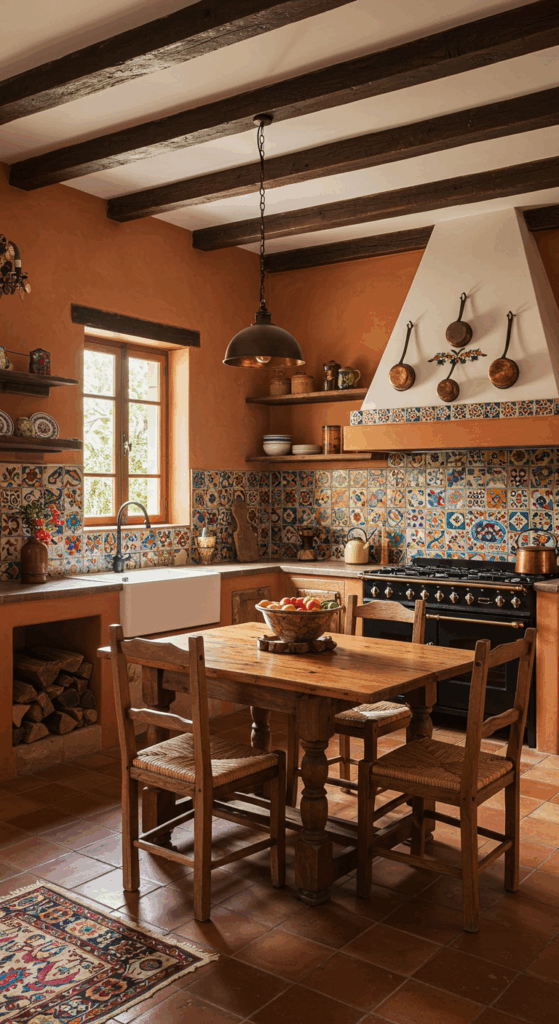
Rustic wooden beams instantly add architectural interest and a sense of history to a space. They provide a warm, earthy contrast to the vibrant colors of the tiles and cabinets, grounding the design and enhancing the kitchen’s cozy, welcoming feel. This is a hallmark of the rustic Mexican kitchen.
You can use authentic reclaimed wood for sustainability or achieve a similar effect with high-quality faux beams, such as this heritage timber rustic sawn faux wood beam. Furthermore, pairing the wooden beams with other rustic elements, like a large farmhouse table, completes the look. To elevate the ambiance, incorporate decorative touches like a farmhouse pendant light with a wood grain finish.
Don’t paint the beams. Instead, use a dark stain to bring out the natural grain and texture of the wood. This creates a more authentic and striking contrast against a light-colored ceiling.
3. Colorful Kitchen Cabinets as a Joyful Statement
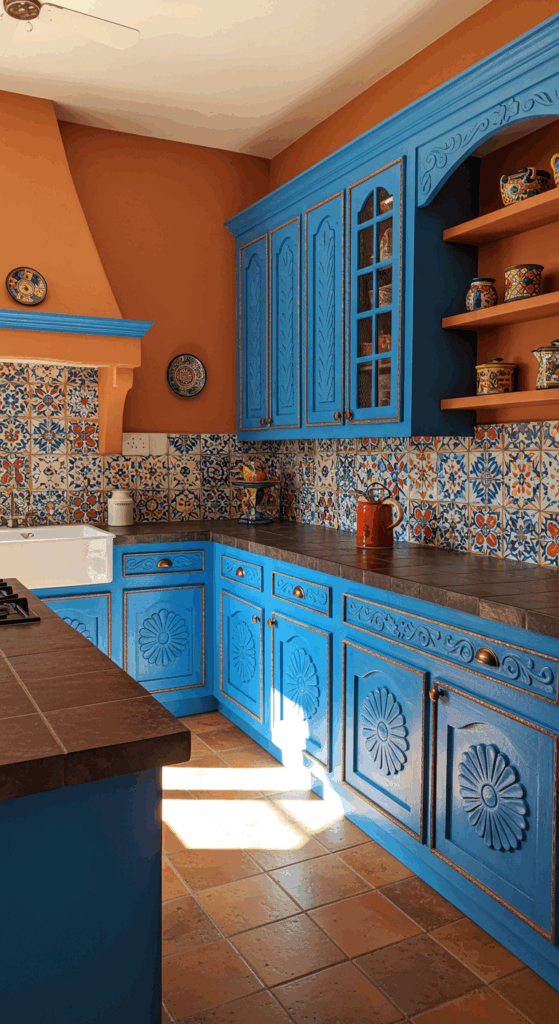
Colorful kitchen cabinets are a hallmark of Mexican design, reflecting a joyful and expressive approach to daily life. Moving beyond standard neutrals immediately infuses the kitchen with personality and energy, making it feel alive and unique. The vibrant Mexican kitchen colors turn functional storage into a primary design feature.
Instead of typical white or wood finishes, try bright blues, warm yellows, or vibrant reds. You can paint all cabinets in one bold color or just use a bright hue on the lower cabinets for a two-toned look. To achieve this, use a durable Cabinet Paint that simplifies the project. For inspiration on color theory, a guidebook like The Secret Lives of Color can be helpful. Finally, add decorative Decorative Cabinet Hardware to complete the transformation.
To balance a bold cabinet color, keep your countertops and backsplash relatively simple. A neutral quartz or butcher block countertop will allow the colorful cabinets to be the star of the show without creating visual overload.
4. Displaying Artisan Crafts and Mexican Folk Art
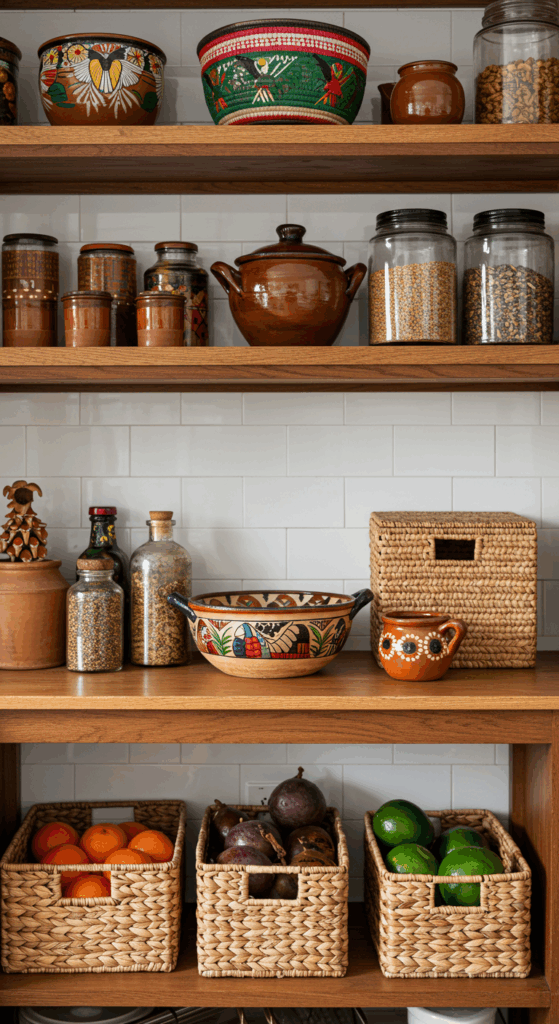
Incorporating artisan crafts and Mexican folk art into your Mexican kitchen decor adds authenticity, depth, and a personal touch. These handcrafted pieces tell a story of culture and artistry, infusing your space with a soul that mass-produced items cannot replicate.
Use open shelving to display key pieces. For instance, showcase a beautiful handcrafted pottery bowl as a centerpiece. Additionally, use woven basket sets to store items like produce or linens, adding both texture and organization. You can also incorporate colorful textiles through items like colorful textile kitchen curtains to brighten up your windows.
Create a dedicated “nicho” or a small arched alcove in a wall. These are traditional architectural features used to display important items, making them the perfect spot to highlight a special piece of pottery or a cherished family heirloom.
5. Using Vibrant Paint Colors on Walls
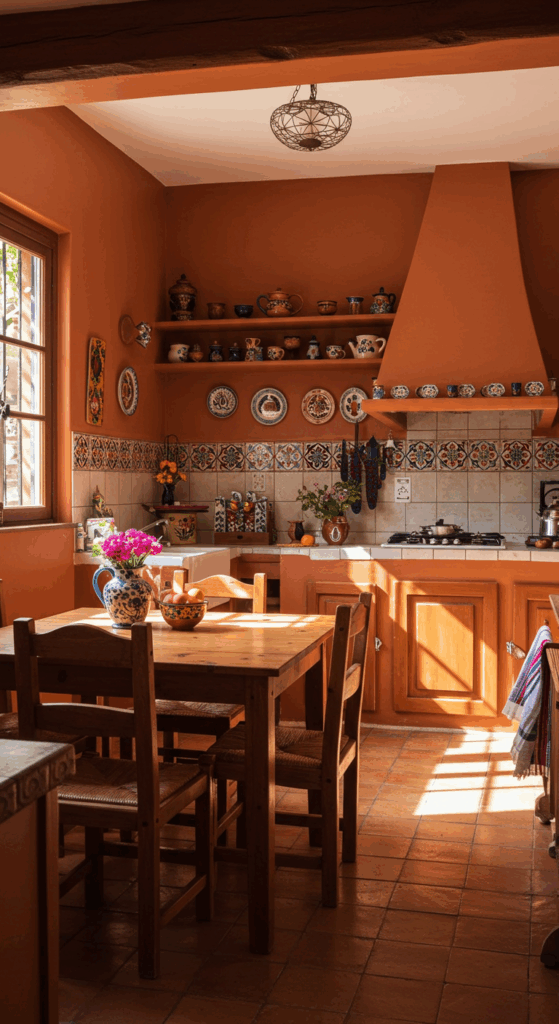
Color is one of the most direct and impactful ways to evoke emotion. Using vibrant paint colors is a cornerstone of the Mexican kitchen style, creating a space that feels energetic, joyful, and deeply connected to a festive culture.
Don’t be shy! Embrace bright oranges, spirited greens, or deep reds on your walls. You can paint one wall a bold color as a backdrop for open shelving or create a more immersive feel by painting the entire room. To get started, you can explore paint samples to find your perfect shade. Once selected, use a quality paint brushes and rollers set for a smooth application. For durability in a high-traffic kitchen, a washable interior paint is an excellent choice.
If painting all four walls feels too overwhelming, consider painting just the lower half of the wall in a vibrant color and topping it with a chair rail. This adds a powerful punch of color while keeping the upper portion of the room feeling light and airy.
6. Embracing Open Shelving
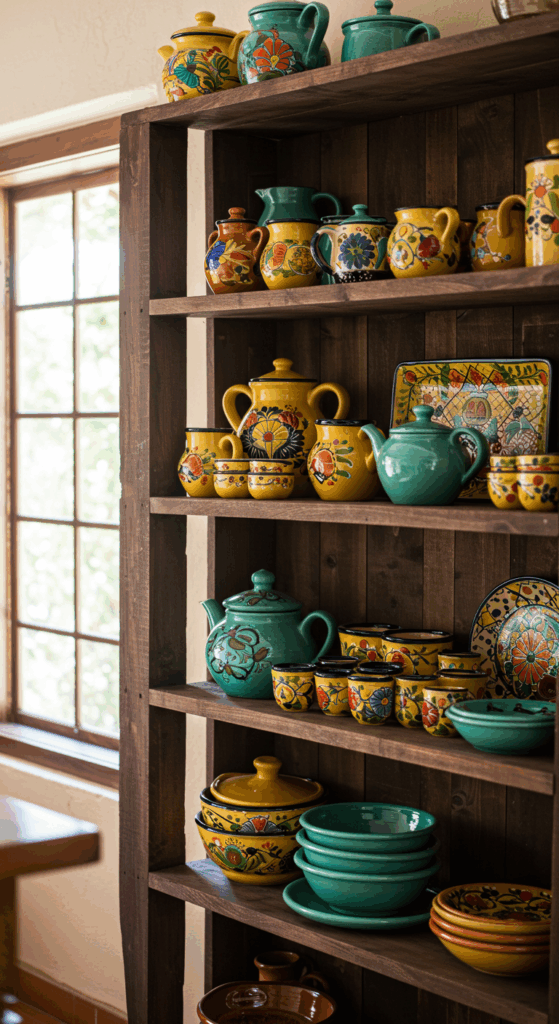
Open shelving contributes to the airy, casual, and communal feel of a traditional Mexican kitchen. It removes the visual bulk of upper cabinets, making the space feel larger and more open, while also allowing you to turn everyday dishware into a key part of your decor.
Replace some or all of your upper cabinets with thick, rustic wooden shelves, often supported by decorative wrought iron brackets. Curate the items you display, mixing everyday plates with decorative pieces like a decorative bowls set. Add life with small indoor plants on plant display stands and add ambiance with under-shelf lighting to highlight your collection.
To keep open shelves from looking cluttered, stick to a consistent color palette for your everyday dishes (e.g., all-white or a simple earthenware). This creates a neutral backdrop that allows your more colorful, decorative artisan pieces to truly pop.
7. Laying Down Terracotta or Saltillo Tile Flooring
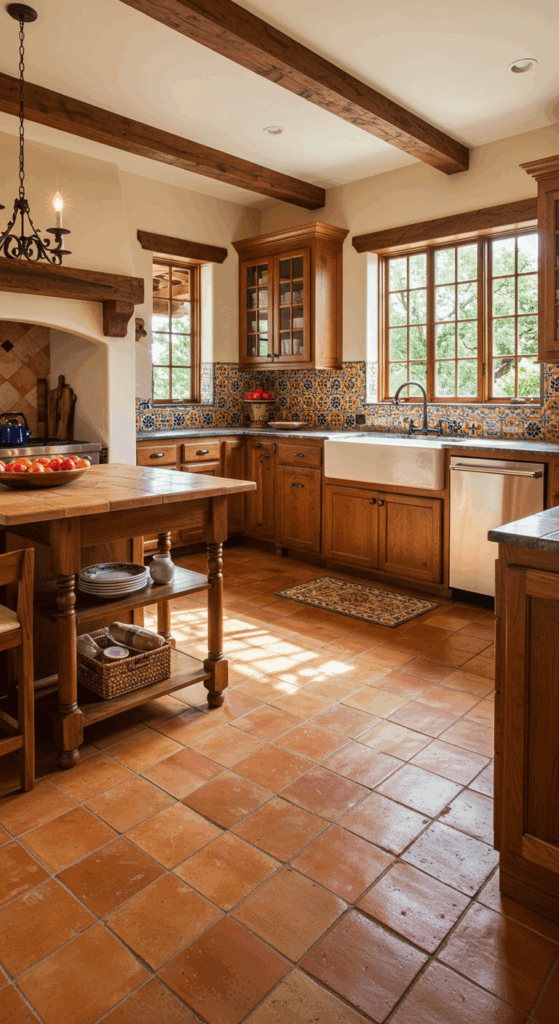
A terracotta floor kitchen provides an unmatched earthy warmth and serves as the authentic foundation for the entire design. The natural color variations and handmade imperfections of traditional Saltillo tiles add immense character and a sense of history to the space.
For a truly authentic Mexican feel, genuine clay terra cotta floor tiles are the best choice. They are durable and easy to maintain, making them ideal for busy kitchens. The natural color variations will complement your vibrant decor beautifully. Because the clay is porous, it is absolutely essential to seal the tiles after installation with a high-quality Tile Grout Sealer to protect them from stains and moisture.
For a decorative touch, consider adding a few randomly placed hand-painted Talavera accent tiles among the plain terracotta floor tiles. This creates a beautiful, custom look and ties the floor in with other tiled elements in your kitchen.
8. Installing a Decorative Range Hood
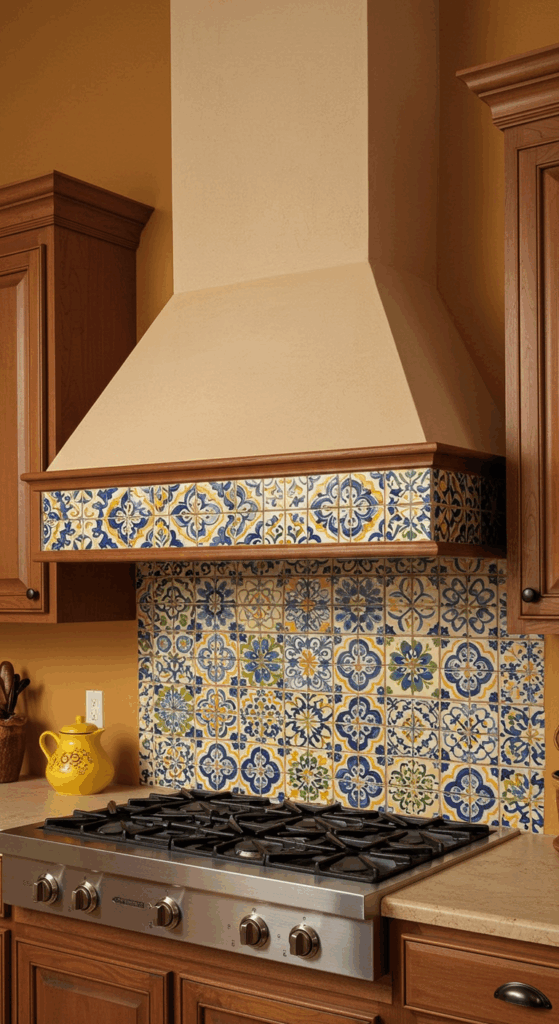
A decorative range hood transforms a purely functional appliance into a stunning architectural focal point. It draws the eye, anchors the cooking area, and provides a large canvas for showcasing materials like hammered copper, rustic wood, or intricate tilework.
Choose a design that complements your kitchen’s aesthetic. A large, curved shape is traditional. You can purchase an unfinished cover, like this curved front unfinished range hood cover, and customize it. A fantastic way to personalize it is by covering it with tile for range hood decoration, such as faux tin peel-and-stick tiles. Ensure the functionality is top-notch with a reliable kitchen ventilation fan.
For a truly impressive statement, consider a range hood made of Cantera stone. This quarried volcanic rock is a classic material in Mexican architecture and can be carved into beautiful, ornate designs.
9. Choosing Natural Stone Countertops
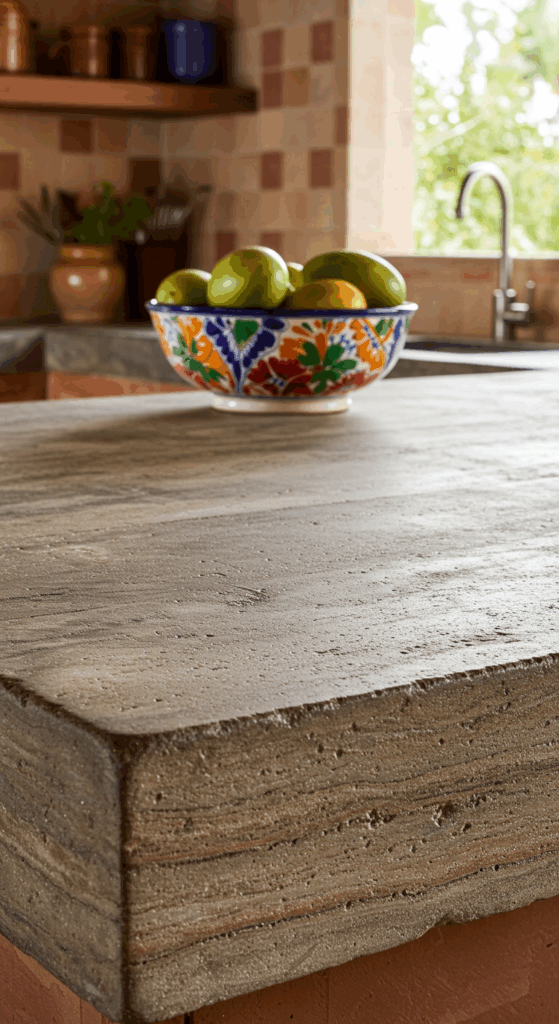
Natural stone countertops add a sense of luxury, durability, and organic beauty that perfectly complements the rustic elements of a Mexican kitchen style. The unique veining and patterns in stones like granite or quartz mean that your surface will be one-of-a-kind.
Granite, quartz, or even concrete are excellent choices. They are resistant to heat and scratches, making them ideal for a passionate cook. To keep your countertops looking their best, it’s important to seal them regularly with a product like Granite Gold water-based sealer spray. For a DIY approach to a high-end look, you can use a Giani white marble epoxy countertop kit or a Giani easy epoxy quartz countertop paint kit.
Instead of a standard polished finish, consider a “honed” or “leathered” finish for your stone countertops. This creates a matte, textured surface that feels more rustic and is better at hiding fingerprints and water spots.
10. Installing Bold, Statement Lighting Fixtures
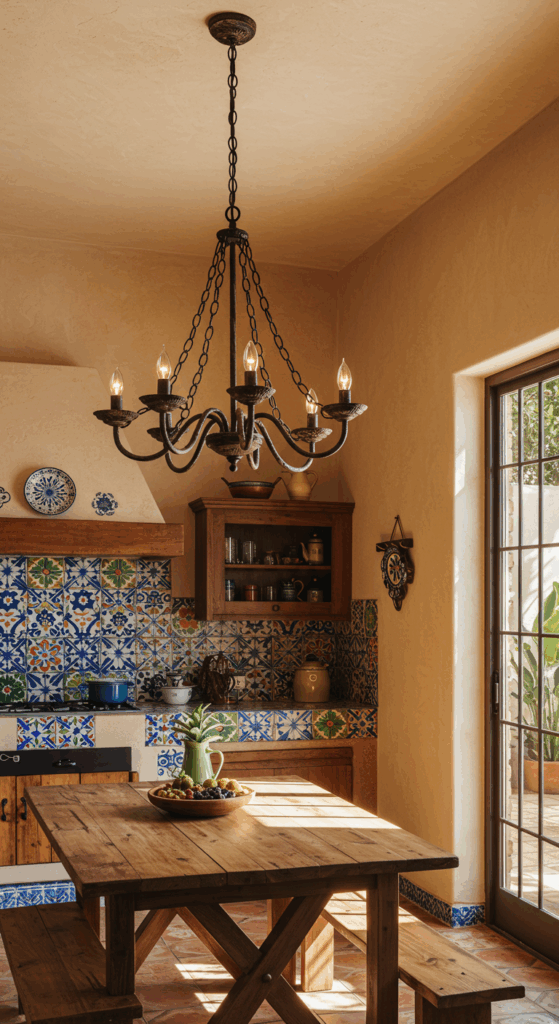
Lighting is often the “jewelry” of a room. In Mexican design, bold lighting fixtures are not just for illumination; they are sculptural elements that add drama and character. A large, ornate fixture can anchor the room and serve as a central piece of art.
A classic choice for statement lighting is a large wrought iron chandelier, which adds rustic elegance. For a splash of color, punched tin or colorful pendant lights hung over a kitchen island or dining area add a playful, artisanal touch. Installing a dimmer switch kit allows you to control the ambiance for any occasion.
Don’t just rely on overhead lighting. Add layers of light with wall sconces on either side of a window or doorway. This creates a warm, ambient glow that makes the kitchen feel more inviting in the evenings.
11. Bringing Life with Indoor Plants
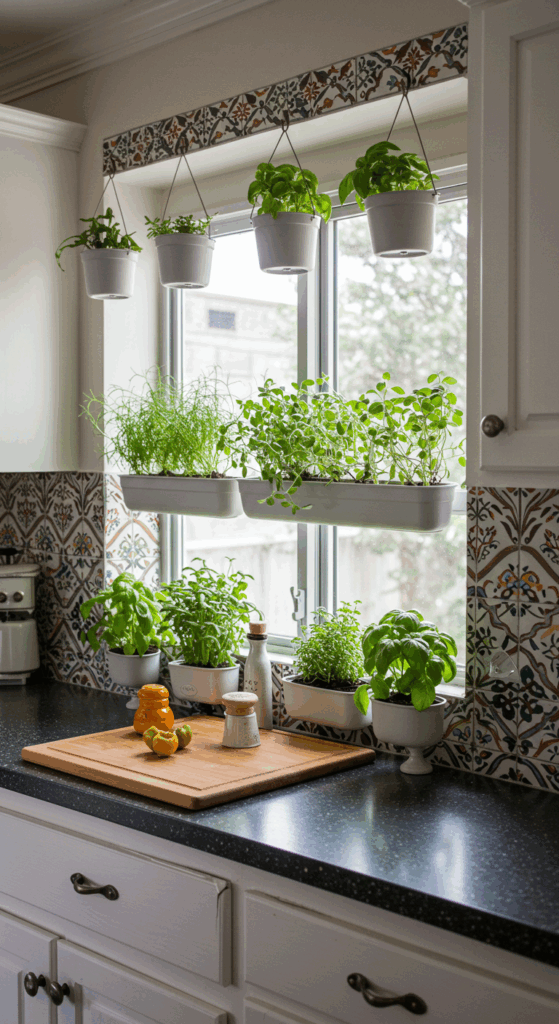
Indoor plants bring life, freshness, and a connection to nature into the kitchen. In a style that already celebrates natural materials, greenery is the perfect finishing touch that makes the space feel vibrant and healthy.
The kitchen is a great environment for many plants. Consider setting up a small herb garden on your windowsill using an herb garden starter kit for fresh ingredients at your fingertips. For decorative touches, a succulent plant set requires minimal care and adds color. For a unique twist, use hanging planters to draw the eye upward.
Use traditional terracotta pots for your plants. The reddish-brown clay color is a perfect match for the Mexican color palette and enhances the authentic, earthy feel of the decor.
12. Layering Different Textures
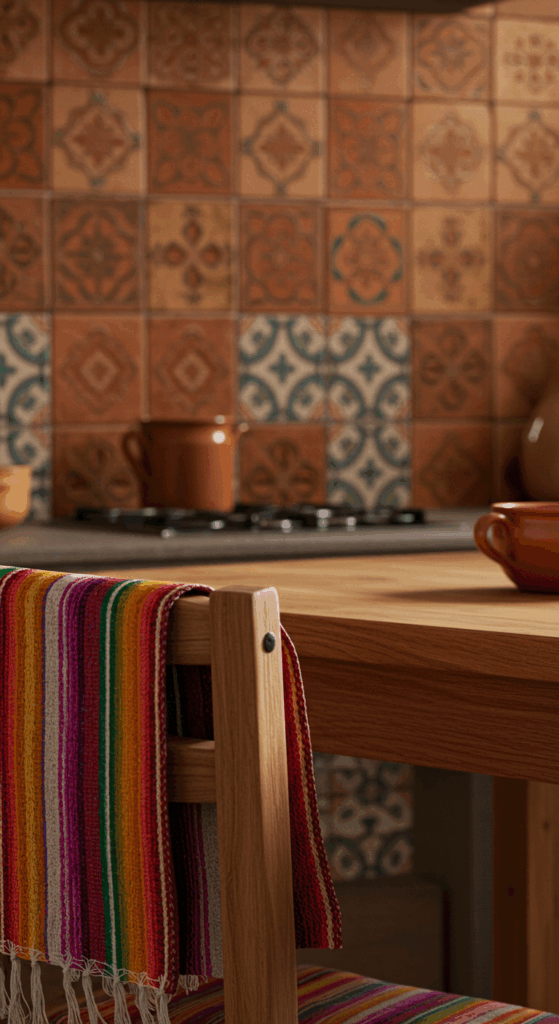
Layering textures is essential for creating a space that feels rich, dynamic, and visually interesting. In a Mexican kitchen, this means combining smooth surfaces like polished stone with rough-hewn wood, soft textiles, and glazed ceramics to engage the senses.
Don’t shy away from combining different materials. For instance, place a woven table runner on a smooth wooden table. Display a glossy, handmade ceramic dish set on matte open shelves. Use woven storage baskets for organization. These layers create a delightful contrast.
Think about texture in unexpected places. A wall with a hand-applied plaster or stucco finish adds a subtle, rustic texture that serves as a beautiful backdrop for all the other elements in your kitchen.
13. Incorporating Statement Furniture
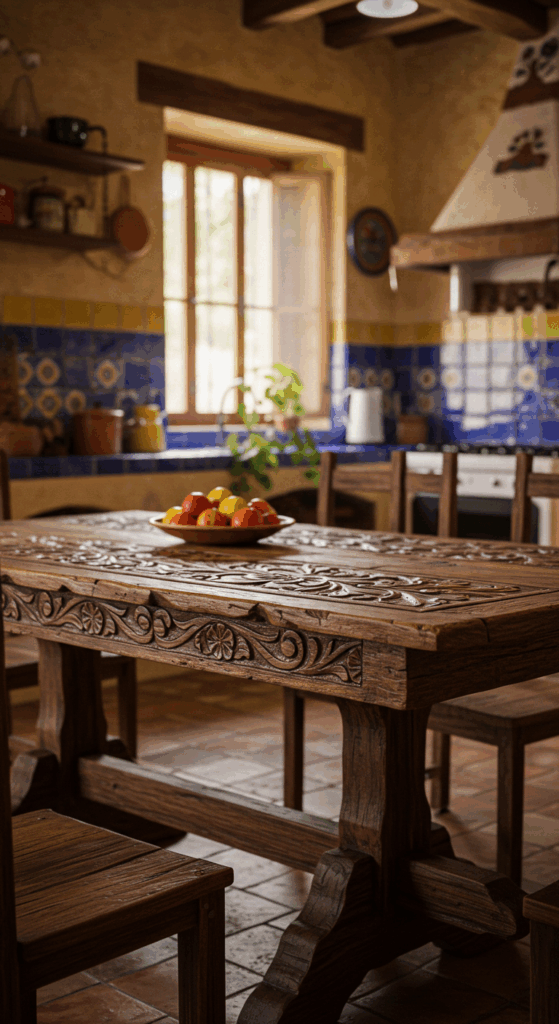
A single piece of statement furniture can anchor an entire room and provide a strong focal point. In a kitchen, this could be a unique island or table that sets the tone for the entire space and showcases exceptional craftsmanship or bold color.
Choose one piece to be the star. For instance, a bold colored kitchen island can serve as a vibrant centerpiece. A large, rustic reclaimed wood dining table can bring warmth and character. Pair these pieces with more subdued elements, like these unique bar stools, to let the statement piece shine.
Look for an antique “trastero,” a traditional Mexican-style freestanding cupboard, often with glass or chicken-wire doors on top. It serves as a beautiful and authentic statement piece for storing and displaying dishes.
14. Using Mosaic Accents for Detail
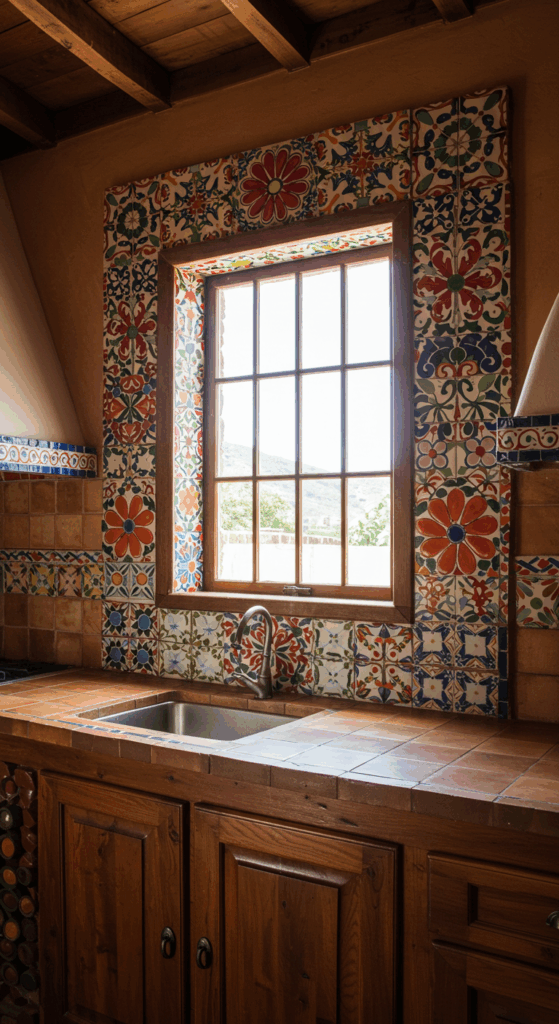
Mosaic accents are a delightful way to add intricate detail and custom artistry to your kitchen. They break up monotonous surfaces and introduce a burst of color and texture that celebrates the rich artistic traditions of Mexico.
You can incorporate mosaics in various ways. A mosaic tile backsplash is a classic choice, and a Mosaic Tile Backsplash Kit makes it an easy DIY project. You can also create a mosaic border on your countertops or floor. For a larger statement, a piece of Mosaic Accent Wall Decor can serve as a stunning art piece.
For a subtle yet beautiful touch, create a mosaic accent on the vertical “risers” of your kitchen steps if they are visible from the kitchen. It’s an unexpected place for detail that is sure to be noticed.
15. Adding Colorful Kitchen Rugs
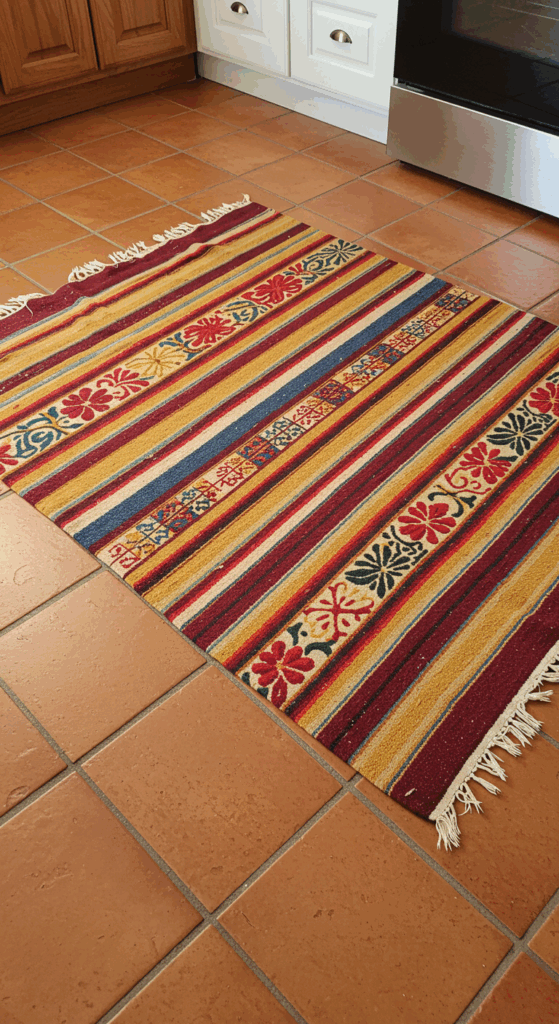
A colorful kitchen rug is a fantastic way to add a layer of softness, comfort, and color to the kitchen floor, which is often a hard surface. It can define a specific area, like the space in front of the sink, and tie together all the other colors used in the decor.
Look for designs that reflect Mexican patterns or vibrant colors. A Mexican patterned kitchen rug is a fantastic choice that adds a lively touch while ensuring safety with a non-slip backing. For practicality, a washable non-slip kitchen rug set is easy to maintain. For more visual interest, a layered textured kitchen rugs set can add depth.
Choose a rug made from a durable, easy-to-clean material suitable for kitchens, such as polypropylene or a washable cotton blend. A flatweave design is often best as it is less likely to trap crumbs.
16. Creating Unique Ceiling Designs
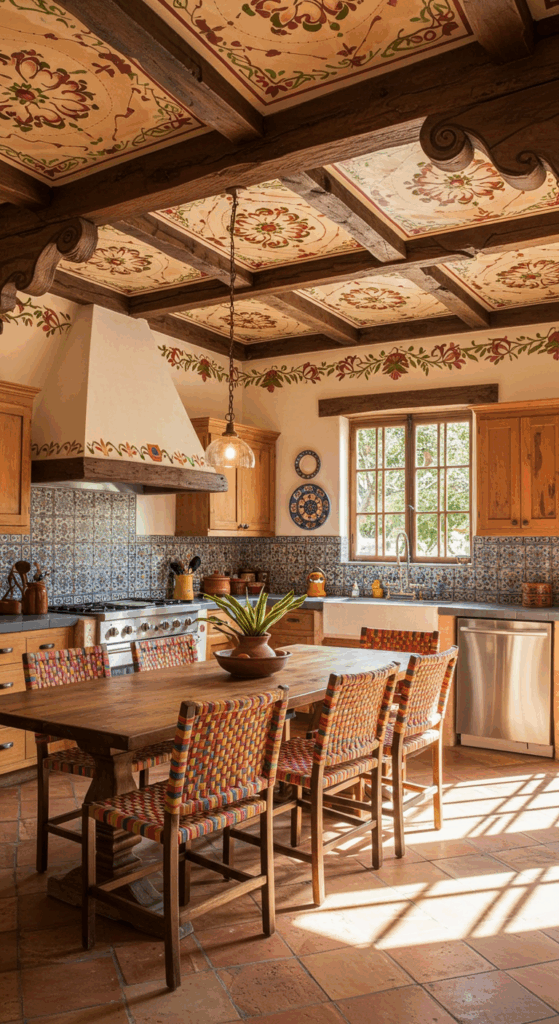
The ceiling is often called the “fifth wall” in interior design. Giving it special treatment draws the eye upward, making the room feel larger and more complete. A unique ceiling design adds a dramatic and unexpected layer of detail, transforming the kitchen from a simple room into a fully realized design space.
A simple yet effective approach is to paint the ceiling a bold color. For example, using a paint like Glidden Grab-N-Go ceiling paint can add a vibrant touch. For more architectural interest, you can add decorative ceiling beams. If you’re feeling adventurous, applying wallpaper is another fantastic option; a wallpaper application tool kit will make the process easier.
For a truly authentic Hacienda style kitchen look, consider a “boveda” ceiling—a beautiful dome or vault made of brick. While a major architectural project, it is the ultimate statement in traditional Mexican design.
17. Bringing It All Together: A Cohesive Mexican Kitchen Style
With so many bold elements, creating a cohesive look is key. The secret to a successful Mexican kitchen design is balance. If you opt for vibrant, patterned Talavera tiles, perhaps choose a more subdued color for your cabinets. Conversely, if you have brightly colored cabinets, a backsplash with simpler, neutral tiles might work best.
Use rustic wood and wrought iron as grounding elements that can tie together more colorful choices. The goal is to create a space that feels energetic and joyful, not chaotic. This approach ensures your southwestern kitchen style feels harmonious.
Embracing the Mexican kitchen style is not just about decor; it’s about creating a space that feels alive and inviting. From vibrant tiles to artisan crafts, each element tells a story. As you consider these Mexican kitchen ideas, remember that your kitchen is a reflection of who you are. Let your creativity flow, and don’t hesitate to mix styles and colors to create a unique space that resonates with you. After all, the best kitchens are made with love.
Frequently Asked Questions (FAQ)
A Mexican kitchen style is all about vibrant colors, bold textures, and artisanal craftsmanship. Key features include hand-painted Talavera tiles, rustic wooden beams, and colorful cabinets. Additionally, incorporating artisan crafts like pottery and textiles enhances the authenticity and personal touch of your Mexican kitchen design.
Yes, absolutely! You don’t need a full renovation. For instance, you can paint your existing cabinets a bold, vibrant color. Another budget-friendly idea is to create a backsplash using affordable but authentic-looking peel-and-stick Talavera tile decals. Finally, scour flea markets and thrift stores for unique, handcrafted pottery and textiles to use as decor.
Mexican kitchens often feature stunning tile patterns. Popular choices for a Talavera tile kitchen include intricate floral and bird motifs with vibrant colors. Furthermore, geometric patterns are also common and can create a striking Mexican kitchen backsplash or floor. Don’t be afraid to mix and match different tiles for a more eclectic look that embodies the spirit of the style!
To achieve a cozy atmosphere, focus on warm and natural elements. Start by adding rustic wooden beams to your ceiling for instant warmth. Pair this with rich, earthy paint colors on the walls. Lastly, incorporating plenty of indoor plants and soft textiles, like a colorful rug or kitchen towels, can make the space feel incredibly inviting and alive!
